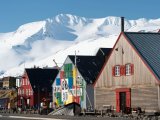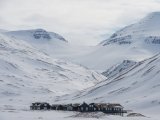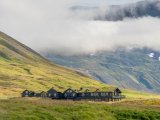Iceland is not just about the ice! This spectacular Island in the North Atlantic, is surely one of nature’s most unique creations; it is a country of extreme geological contrasts. Widely known as “The Land of Fire and Ice” Iceland boasts some of the largest glaciers in Europe and some of the world’s most active volcanoes. Iceland is also the land of light and darkness. Long summer days with near 24-hours of sunshine are offset by short winter days with only a few hours of daylight. Here you find endless lava fields, ice-age relic glaciers, black sand beaches, bubbling mud-ponds and dramatically erupting geysers, all within a short drive from your comfortable hotel. Iceland is also a home to a progressive and peaceful nation that has formed a modern society where freedom and equality are the most important qualities. Iceland is closer than you think, and the distance from New York to Iceland is equal to the distance between New York to Los Angeles…
Combine the unearthly nature, the short distance from the USA and some of the friendliest people in Europe and you have a recipe for a memorable journey!
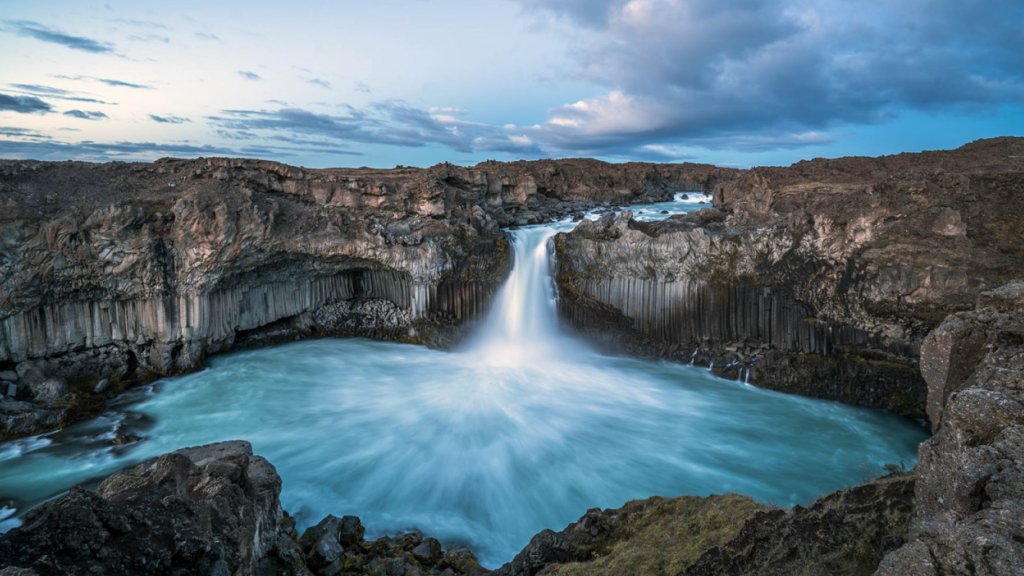
Iceland
General Information
Iceland is located in Northern Europe; it is an island between the Greenland Sea and the North Atlantic Ocean, northwest of the United Kingdom.
Settled by Norwegian and Celtic (Scottish and Irish) immigrants during the late 9th and 10th centuries A.D., Iceland boasts the world's oldest functioning legislative assembly, the Althingi, established in 930. Independent for over 300 years, Iceland was subsequently ruled by Norway and Denmark.
General Facts:
Size (land area): 100,250 sq km (38,706 sq mi), it is slightly smaller than Pennsylvania; about the same size as Kentucky
Population: 3399,747people; homogeneous mixture of descendants of Norse and Celts 94%, population of foreign origin 6%
Border Countries: None
Elevation Extremes: lowest point: Atlantic Ocean 0 m; highest point: Hvannadalshnukur 2,110 m (6,922 feet
Religion: Official Religion is Evangelical Lutheran Church of Iceland, counting for 67% of the population.
Languages: Icelandic, English, Nordic languages, German widely spoken
Entry Requirements: Iceland is a party to the Schengen Agreement. This means that U.S. citizens may enter Iceland for up to 90 days for tourist or business purposes without a visa. Your passport should be valid for at least three months beyond your planned date of departure from the Schengen area. You need sufficient funds and a return airline ticket.
Source: The World Factbook
When to Travel?
Iceland does not have a rainy season, but precipitation peaks in October to February, with the southern and western parts receiving the most rainfall. The North, East and Interior experience colder winter temperatures but warmer summers, and noticeably less snow and rain.
HOW COLD DOES IT GET?
Thanks to the Gulf Stream, Iceland isn´t as cold as it sounds. Temperatures are moderate year-round. Average July temperatures are around 52 F. The north and east are often the warmest parts in the summer. Snow is not the norm and only settles intermittently in Reykjavik but tends to stay longer in the north. Fine winter skiing areas are found on higher ground outside many towns, however average January temperatures in Reykjavik, at around 32 F, are higher than those in New York.
Travel Highlights
Reykjavík
Reykjavík is the natural starting point for any visit to Iceland, and not undeservedly so. With a population of 120,000, the capital is world-renowned for its culture, history, and natural beauty on all fronts.
Reykjavík is truly the gateway to Iceland, and many day trips can be taken from the city to the surrounding mountains, glaciers, volcanos and hot springs. Day-excursions from Reykjavík include horseback riding, glacier climbing, river rafting, caving, whale watching, etc. Meanwhile, downtown, in the city's museums, galleries, theatres, cafés, and swimming pools, busy locals bustle about with seemingly inexhaustible energy. At the restaurants downtown, local ingredients are served fresh.
Art galleries such as the Reykjavík Art Museum and the National Gallery showcase classic Icelandic artists' works, while smaller independent galleries display the projects of cutting-edge, contemporary Icelandic and international artists. Various museums preserve the culture and history of both the city and the country at large. Designated as a UNESCO City of Literature, Reykjavík is also the core of Iceland's literary heritage. You'll discover a treasure of literary works and a wealth of talented poets and authors.
South
Iceland's south coast is home to some of the country's most visited tourist attractions. The coastline itself is renowned for its beauty, and the towns along the coast are famous for their fresh seafood.
From beautiful waterfalls to magnificent glaciers, the South has it all. With the Golden Circle route, connecting Þingvellir, Gullfoss, and Geysir, located in the area, it is a top-rated destination for visitors. Further east along the shore, you will find Skógafoss Waterfall, Jökulsárlón Glacial Lagoon, Vatnajökull Glacier, and several other natural wonders.
The South is rich in history and culture. Events from the ancient Sagas are remembered in many ways along the coast, and several museums in the area celebrate Icelandic customs and heritage. With much of the country's agricultural products coming from this region, the South is also a wonderful testimony to Icelandic restaurant culture.
East
The east coast of Iceland is home to the country's largest forest, lush farmlands, and a range of small fjords and islands. Thanks to the East's many natural harbors, various fishing villages, and small seaside communities border the coast.
Impressive magma chambers filled with colorful mineral deposits can be seen and visited along the eastern coast. In the summer months, the East of Iceland becomes a creative hub for artists and young people from around Iceland and abroad. Several music and art festivals have been popping up and expanding steadily in recent years.
West
West Iceland is one of Iceland's most geologically diverse regions, where nature is inextricably linked to the story of the people. A world where culture, nature, and history complement each other, creating a unique experience. This vast area consists of fjords, valleys, craters, glaciers, and volcanoes. Snæfellsjökull National Park is Iceland's only national park that reaches into the sea. The mystical volcano Snæfellsjökull Glacier has inspired artists and poets through the centuries, as one of seven most significant energy centers on Earth, and the setting of Jules Verne's Journey to the center of the Earth.
Its natural wonders are a nearly exhaustive sampling of all that Iceland offers, ranging from slumbering volcanos and majestic waterfalls to a variety of flora and wildlife. The short distances between popular destinations make it possible to enjoy the area at a comfortable pace all year round, so remember to slow down in West Iceland.
North
The North of Iceland truly is a land of contrasts. Its long valleys and peninsulas are interspersed with mountains, lava fields, and smooth hills carved out by rivers. The deep and numerous indentations in the coast of the North are at times lush with vegetation, at others barren. As one nears the Arctic Circle in the northern latitudes, the midnight sun is invariably awe-inspiring.
Many towns of the North are dedicated to marine life. The Húsavík Whale Museum and the Seal Center in Hvammstangi are two options for visitors. Close by in the northern reaches of the Vatnajökull National Park is the impressive Ásbyrgi Canyon, as well as the Dettifoss Waterfall—the most powerful in Europe. The nearby Lake Mývatn and its surrounding wetlands have an exceptional variety of waterbirds and rock formations.
The North is home to Iceland's second-largest urban area, Akureyri, located in Iceland's longest fjord. Rich in culture and history, the charming downtown is full of late-nineteenth-century wooden houses. In summer, golfers can take advantage of the midnight sun at the Arctic Open.
Highlands
Iceland's highlands are an untamed mingling of rocky deserts, jagged peaks, volcanoes, ice caps, valleys, and hot springs that should be explored while considering care and preparatory measures.
Surrounded by obsidian and colorful rhyolite mountains, visitors can bathe in natural hot rivers in the geothermal area of Landmannalaugar. The Laugavegur trail leads to the woodland nature reserve Þórsmörk—a hidden valley surrounded by mountains, glaciers, and glacial rivers—that serves as a popular base camp for hikers who intend to reach the surrounding highland mountains.
For centuries, the interior of Iceland was virtually inaccessible, for years at a time playing host only to outlaws in hiding. Kjölur and Sprengisandur, the untouched wilderness of Iceland's mountainous center, are now open to the public for cautious exploration by foot or 4x4 vehicles in the summer months.
Reykjanes
The Reykjanes peninsula is a geothermal wonder, where lighthouses outnumber villages. Besides hosting the Keflavík International Airport and, just a few minutes away, the spectacular Blue Lagoon, the Reykjanes peninsula is a destination in its own right.
The Reykjanes peninsula has several high-temperature geothermal areas, three of which are harnessed to generate electricity. Nowhere on earth is the junction in the earth's crust between the European and American tectonic plates is as clearly visible as on the Reykjanes peninsula. The area is a veritable hotbed for recreational activities. The dramatic, rugged landscape features volcanic craters, caves, lava fields, geothermal waters, hot springs, and a variety of restaurants, museums, churches, lighthouses, and festivals.
Westfjords
One of Iceland's best-kept secrets is undoubtedly the country's north-west corner, usually known as the Westfjords. Isolation has preserved the region in relatively unspoiled wilderness. Mostly uninhabited, Iceland's Westfjords are frequently distinguished by travel guides as a destination of excellence and are a must-see for any serious explorer.
Hornstrandir is located in the Westfjords' northwestern corner, an uninhabited peninsula and nature reserve that is a haven for the Arctic fox and a variety of birdlife. The bird cliff Látrabjarg, on the west side of the Westfjords, which apart from hosting nearly half of the world's population of some bird species, is also the westernmost point of Europe. The spectacular Dynjandi, a set of waterfalls with an accumulated height of 100 meters, is another must-see.
Folklore is as much alive in the Westfjords with museums dedicated to sorcery and witchcraft and monsters and creatures from the sea.
Things to Do
Northern Lights
The Aurora Borealis, more commonly referred to as the Northern Lights, is a natural phenomenon created when particles emitted by the sun, interact with the atmosphere in the Earth's magnetic field, causing peculiar luminous green streaks across the skies. The best season to see the northern lights in Iceland is from September to mid-April; these are the months where there are long and dark nights.
4x4 Vehicle Tours (Super Jeep)
Go off the beaten track in these monsters trucks with 49“ tires if you want to explore Iceland in an adventurous way!
These vehicles are designed with large tires, especially to navigate the steepest and rockiest terrains, deserts or beaches and access areas that regular cars can not, such as the Highlands and glacier summits.
Helicopter Tours, Heli Skiing and Snowboarding
Iceland's diverse landscape is most breathtaking when viewed from above, making aerial sightseeing tours of mountain tops, craters, geothermal areas, volcanoes, and waterfalls an awe-inspiring experience.
Many of Iceland's most beautiful locations are in remote areas. Flying allows you to reach hard-to-access places with limited effort. Perhaps you would enjoy the breathtaking views as you ski or snowboard down the mountain. A mountain top lunch can be arranged and served outside.
Ice Climbing, Ice Caving and HIking on Glaciers
When making a trip to Iceland, it is hard not to pay special attention to its namesake, namely, its 4,500 square miles of glaciers!
Ice excursions on the glaciers are practiced year-round and take place mainly on the Sólheimajökull and Svínafellsjökull glaciers in the south of Iceland. Hiking trips are also available onto the Snæfellsjökull glacier in the west and the Vatnajökull glacier in the east. Ice caving excursions will take you deep into ice tubes for an unforgettable experience.
Caving
Due to its position on the Mid-Atlantic Ridge, Iceland is one of the world's most active volcanic regions. Its unique geological conditions make for some awe-inspiring rock formations, both beneath the surface and above it. Various tube caves—formed by magma flowing underneath the earth's surface after the lava has solidified overhead—can safely be explored through guided excursions year-round.
Iceland is also one of the few places in the world where you can enter a magma chamber. The Þríhnúkagígur crater is a remarkable and rare natural phenomenon: a volcano that erupted about 4,000 years ago and now sits dormant. The volcano is reached via an hour-long hike over a lava field and entered by way of an open cable lift, a descent of 400 feet. The colors and sights within the vast magma chambers are indeed one of nature's masterpieces.
Geothermal Pools and Swimming
The local natural wonder that is perhaps most ingrained in the fabric of Icelandic culture is the bounty of geothermal energy. These naturally heated water powers cities and heats homes, baths, and pools. The most famous of these is the Blue Lagoon, located in a lava field on the Reykjanes Peninsula. As unlikely as it may sound, Reykjavík sports its geothermal beach, with white sands and warm ocean water.
Horseback Riding
The Icelandic horse is a unique breed of smallish horses that came to Iceland with the first settlers from Norway 1100 years ago. The Icelandic horse continues to be used for farm work and showing, racing, and recreation. Horse riding is a great way to explore unspoiled nature, offering stunning panoramic landscapes and grazing sheep. .
Whale Watching
Iceland is the perfect location for whale watching excursions. The cold waters off the coast play host to a diverse marine life. In particular, during the summer months, the shores become a veritable feeding ground for multiple species of large marine mammals, giving visitors a chance to observe these magnificent creatures in their natural habitat.
Shopping and Museums
Reykjavík's shopping streets Laugavegur and Skólavörðustígur are filled with upscale design houses, featuring the latest in world fashion, mixed with small hole-in-the-wall stores featuring local designers. You will also find a curious mix of souvenir shops, jewelry designers, and outdoor clothing stores along the way. Shopping malls Kringlan and Smáralind are also good bets, offering up to 150 stores under one roof. The traditional Icelandic lopapeysa, a knitted wool sweater with a unique design at the top and sleeves, is now a must-have fashion item.
Terrific photographic books on all things Icelandic are widely available and English translations from well-known authors, including the Nobel Laureate Halldór Laxness. After shopping, delve into the cultural heritage or be amazed by outlandish curiosities. The range of and the abundant number of museums in Iceland is vast, and they all aim to educate and entertain their guests.
Suggested Journeys
 Midnight-Sun Golfing in Iceland
Midnight-Sun Golfing in Iceland8 Days / 7 Nights • Daily arrival in Reykjavik, May through August
Iceland, a small nation of about 350,000 inhabitants and the size of Kentucky, surprisingly has 65 golf courses, including fifteen 18-hole courses. Playing golf in Iceland is anything but an everyday experience. The diversity of the landscape is overwhelmingly beautiful, and the courses offer an unparalleled experience. Battle against nature as you play against your ever-changing surroundings and elements without worrying about buzzing mosquitoes or snakes in the holes, as Iceland has none.
And during the summer, you can play golf... at midnight!A journey by Private Car and Guide
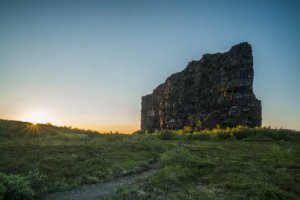 Iceland - Summer Adventure
Iceland - Summer Adventure8 Days / 7 Nights • Daily departures between May to October
A Journey By Private Car
Embark on a truly magical journey through Iceland's most iconic landscapes and terrains. Explore the geysers, enter the magma chamber of a volcano, paddle your kayak at Glacier Lagoon, and watch for whales aboard a thrilling speedboat ride. Sum it all up with the warm misty water at the Blue Lagoon!
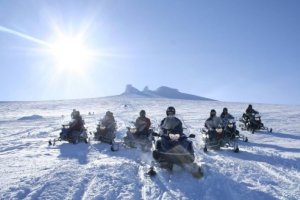 Northern Lights of Iceland
Northern Lights of Iceland7 Days / 6 Nights • Daily Departures from November through March.
A Journey by Private Car and Guide
Warm your heart this winter in Iceland. Witness the phenomenon of the Northern Lights, nature's very own light show. Embark on adventures of a lifetime as you charter a private helicopter and soar above the wilderness. Snowmobile on top of E15 Volcano, travel the Golden Circle, trek on glaciers, go deep into the Crystal Ice Cave and enjoy a private culinary tour.
Featured Properties
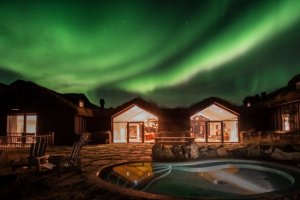 Deplar Farm
Deplar FarmA true luxury Experience. Deplar is a converted sheep farm, situated in the remote Fljot valley in the mountainous Troll Peninsula in northern Iceland. Today’s modern structure celebrates a rugged past, and honors authentic Icelandic architecture with 13 en suite bedrooms. It’s a one-stop-shop for adventure, solitude, mystery, and high-end amenities.
 Canopy by Hilton
Canopy by HiltonThere is no doubt that the Canopy is one of the trendiest addresses in Reykjavik; boasting an eclectic and inviting design, the hotel is set at the perfect location in the heart of the city’s most famous shopping street. Enjoy!
 Sand Hotel
Sand HotelSand Hotel is a luxury property located in the heart of downtown Reykjavik. The hotel's relaxed atmosphere and boutique-style design make it a desirable place to stay, with the bustling city life and rich culture just around the corner.

